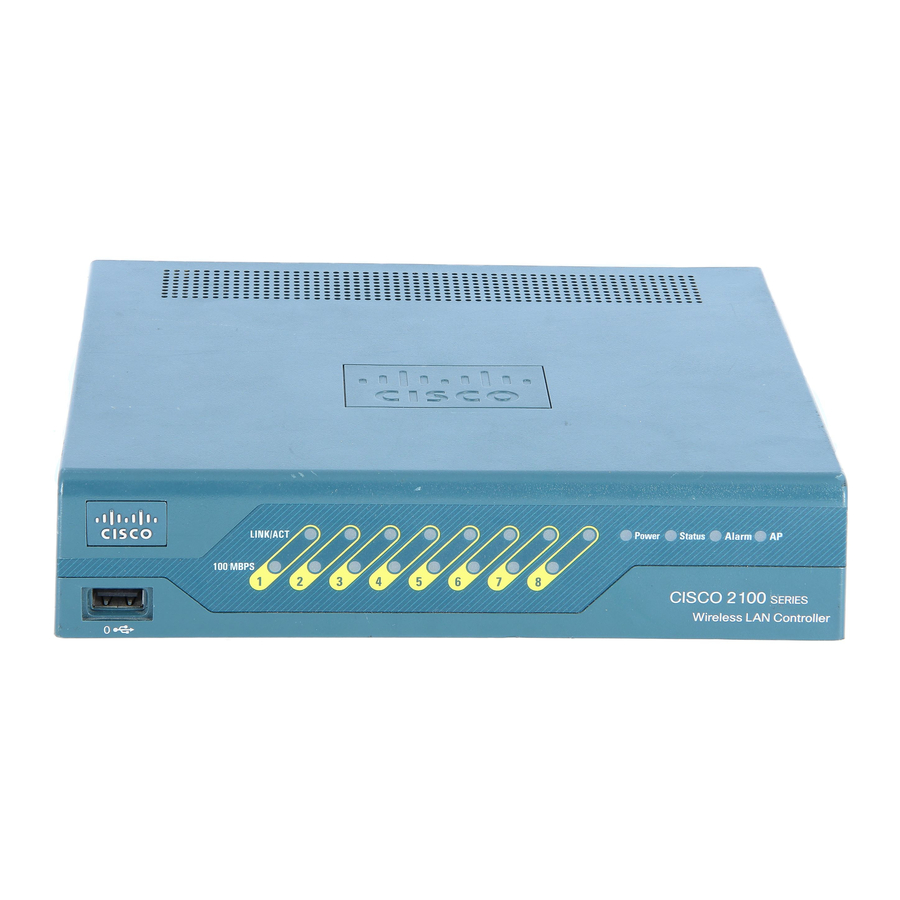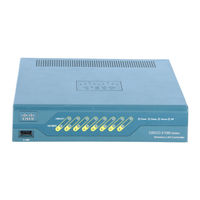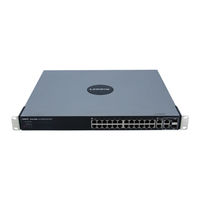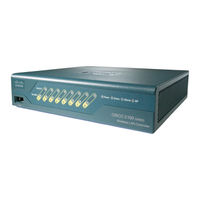
Cisco 2100 Series Manuals
Manuals and User Guides for Cisco 2100 Series. We have 6 Cisco 2100 Series manuals available for free PDF download: Configuration Manual, Quick Start Manual
Cisco 2100 Series Configuration Manual (796 pages)
Wireless LAN Controller
Brand: Cisco
|
Category: Controller
|
Size: 19.57 MB
Table of Contents
-
-
-
-
-
-
Ports58
-
Service Port61
-
Interfaces62
-
Wlans65
-
-
-
-
-
-
-
-
Save Config116
-
-
Step 4116
-
11Nsupport116
-
High Band116
-
Low Band116
-
MID Band116
-
Network116
-
-
Configuring SNMP120
-
-
-
-
Load-Based CAC148
-
U-Apsd150
-
-
Configuring LDAP221
-
-
-
ACL-Name263
-
Qos-Level263
-
Interface-Name264
-
VLAN-Tag264
-
-
Challenges268
-
Configuring RLDP272
-
WCS Interaction272
-
-
Configuring IDS291
-
Configuring Wips307
-
-
WLAN Overview311
-
Configuring DHCP318
-
-
-
-
Debugging CAPWAP377
-
-
Viewing Clients446
-
-
-
-
Client Roaming476
-
-
Cac484
-
-
-
-
-
-
Uploading Pacs525
-
-
-
-
-
-
RF Group Leader576
-
RF Group Name576
-
-
Configuring RRM579
-
Overriding RRM595
-
-
-
Appendix
673 -
-
Appendix
699 -
-
Appendix
717 -
-
-
Client Reporting735
-
-
Appendix
761
Advertisement
Cisco 2100 Series Configuration Manual (406 pages)
4400 Series Wireless LAN Controller
Brand: Cisco
|
Category: Controller
|
Size: 12.91 MB
Table of Contents
-
Preface
17-
Audience18
-
Organization18
-
Purpose18
-
Conventions19
-
-
Cisco.com22
-
-
-
-
-
-
-
Ports54
-
Interfaces57
-
Wlans60
-
-
-
-
-
Configuring SNMP102
-
-
U-Apsd117
-
-
Configuring IDS156
-
-
WLAN Overview174
-
Ckip
184-
-
VPN Passthrough187
-
Local Netuser188
-
-
-
-
-
Cisco 2100 Series Configuration Manual (50 pages)
Cisco 8500 Series
Wireless LAN Controller
Brand: Cisco
|
Category: Controller
|
Size: 2.13 MB
Table of Contents
-
-
Overview9
-
Advertisement
Cisco 2100 Series Quick Start Manual (49 pages)
Wireless LAN Controller
Brand: Cisco
|
Category: Network Hardware
|
Size: 2.14 MB
Table of Contents
Cisco 2100 Series Configuration Manual (40 pages)
WLC (Wireless LAN Controller), WiSM (Wireless Services Module) Integrated WLC with APs
Brand: Cisco
|
Category: Network Hardware
|
Size: 2.33 MB
Table of Contents
-
Overview
4





